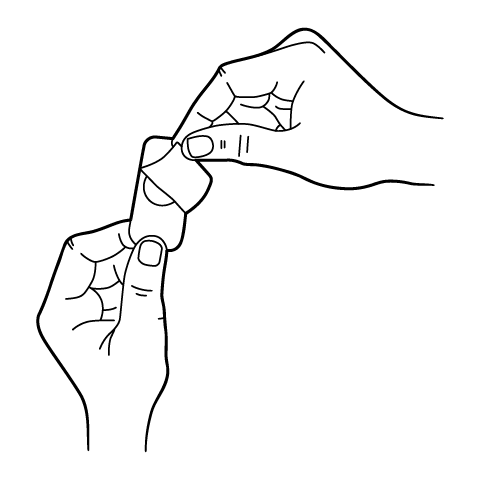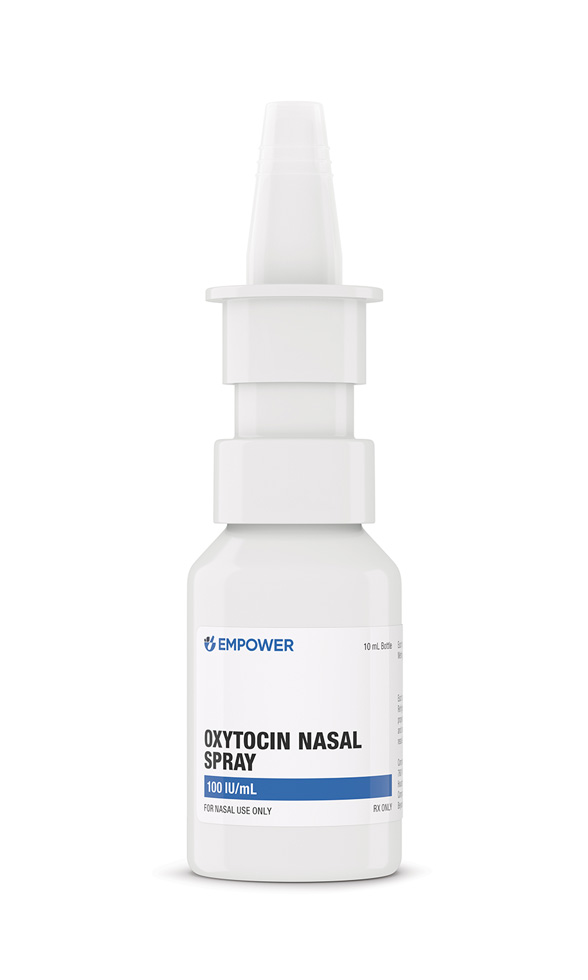Product Overview
Sildenafil
Initially developed for the treatment of pulmonary hypertension, angina, and other cardiovascular conditions, sildenafil citrate was accidentally found to be beneficial in males who suffered from erectile dysfunction (ED). Prior to the discovery of its benefits in treating ED, this condition was considered to be an inevitable part of aging in men or due to underlying psychological causes. After its approval in 1998 by the U.S. Food and Drug Administration for the treatment of ED, the popularity of sildenafil citrate has skyrocketed over the past couple of decades as health care providers generally recommend this medication as the first-line therapy in the management of erectile dysfunction in men. Other contributing factors to its appeal and popularity is that sildenafil citrate can be taken orally on demand, is generally well tolerated, with minimal adverse effects.[1]
Sildenafil citrate is a vasoactive medication belonging to the drug class of phosphodiesterase - 5 enzyme (PDE-5) inhibitors; it is a competitive antagonist of this enzyme. PDE-5 can be found all over the human body especially in the corpus cavernosum within the penis, striated and smooth musculature, as well as in platelets. However, PDE-5 has the largest distribution in the penile corpus cavernosum which is why sildenafil citrate is able to work selectively in this part of the body.[2]
Sildenafil citrate is generally administered orally. However, it can also be administered intravenously or sublingually. Even though its most popular clinical indication for use is in the management of erectile dysfunction, it is also used in the management of pulmonary hypertension, persistent pulmonary hypertension of the newborn, Raynaud’s phenomenon resistant to other vasodilators, as well as in the prevention of pulmonary edema at high altitudes. After oral ingestion, absorption of sildenafil citrate rapidly occurs mainly in the small intestine from where it is then transported in the bloodstream to its area of action. Sildenafil citrate is metabolized in the liver through the action of the hepatic isoenzymes cytochrome P450 3A4 and cytochrome P450 2C9. Following hepatic metabolism, the metabolites are excreted mainly in the stool and, to a lesser degree, in the urine.[2[footnote][footnote]3][4]
Sildenafil citrate is classified as a pregnancy category B drug by the Food and Drug Administration. Studies have not demonstrated definite risks to fetuses when sildenafil is administered to pregnant mothers. At present, there are no definite clinical indications that warrant the administration of sildenafil citrate in women. Studies done till date have not indicated that sildenafil citrate has comparable benefits in women as they do in men. There are other studies that are still ongoing, however, and their outcomes may provide further insight regarding the utility and benefits of sildenafil in women.[5][6]
Oxytocin
Oxytocin is a neurohypophyseal peptide, well known for its hormonal role in lactation and parturition but also plays a significant role in copulatory and erectile behavior. It was discovered and synthesized by Nobel Prize winner Du Vigneaud and colleagues in the 1950s.[7] Oxytocin is made up of nine amino acids. The synthesis of oxytocin begins with the paraventricular nucleus and supra-optic neurons in the hypothalamus express large quantities of oxytocin, which is released from the posterior pituitary gland. [7]
A discovery in 1986 was made that oxytocin causes penile erection in male rats when injected into the brain and interacts with specific receptors (proteins) located in the cell bodies of certain neurons. These neurons may use a chemical called glutamate and contain an enzyme called NO synthase. When oxytocin binds to its receptors on these neurons, it triggers an increase in the production of a chemical called nitric oxide (NO) in these particular areas of the brain.[7]
Sildenafil
Sildenafil plays an indirect role in causing penile erection in men suffering from erectile dysfunction. In normal penile erection, sexual stimulation leads to the activation of the non-adrenergic as well as non-cholinergic nerves in the pelvic parasympathetic plexus. Following the activation of these nerves, the neurotransmitter nitric oxide is then released which then transverses the neuromuscular junction of the smooth muscle of the corpus cavernosum and the penile arteries. Nitric oxide then causes an increase in the production of the intracellular second messenger cyclic guanosine monophosphate (cGMP), which is a cyclic nucleotide derived from guanosine triphosphate (GTP). The release of cGMP leads to an increase in blood flow within the penile arteries as well as the relaxation of the smooth muscles of the corpus cavernosum, thereby resulting in penile erection. Penile detumescence is caused by the release of the phosphodiesterase-5 enzyme, which breaks down cGMP and, therefore leads to the contraction of the penile arteries and the corpus cavernosal smooth muscles.
Sildenafil has a chemical structure that is very similar to cGMP and binds competitively to phosphodiesterase-5 enzyme. By binding to the receptors on PDE-5, sildenafil prevents PDE-5 from binding to and degrading cGMP. This competitive antagonist action of sildenafil allows the actions of cGMP in the penile arteries and corpus cavernosum to be prolonged, resulting in the prolongation of penile erection.[2][4][7]
In addition to its location in the penile corpus cavernosum, the phosphodiesterase-5 is also located in large amounts within the pulmonary vasculature. In the lungs, PDE-5 breaks down cGMP, similar to its actions in the corpus cavernosum. Sildenafil also acts as a competitive antagonist to PDE-5 in the pulmonary vasculature preventing the breakdown of cGMP. This has the effect of causing a reduction in pulmonary vascular resistance as well as the mean pulmonary artery pressure. Due to this effect on the pulmonary vasculature, sildenafil has been proposed as an adjunct medication in the treatment of primary pulmonary hypertension, a disease of childhood with a typically poor prognosis. However, studies as to its efficacy in the management of this disorder are still ongoing.[2]
Oxytocin
Oxytocin contributes to ejaculation in those who were assigned male at birth (AMAB). In order to propel sperm and semen forward for ejection, the hormone constricts the vas deferens. The production of testosterone, a sex hormone, in the testes is similarly impacted by oxytocin. [8] Nitric oxide (NO), which has been demonstrated to be the primary mediator of Oxytocin’s activities in rats, is one of the most effective substances known to cause penile erection.[9] [10]
Sildenafil
There are certain conditions under which sildenafil citrate should be administered with caution or outright avoided. Some of these conditions are:
Hypersensitivity: Sildenafil is absolutely contraindicated in individuals who have a demonstrated hypersensitivity to the drug or any of its components.[9]
Nitrate therapy: Individuals who are not nitrate therapy should not be administered sildenafil citrate. Nitrates are potent vasodilators typically used in the management of cardiac conditions such as angina pectoris. Since sildenafil also a vasodilatory effect through its actions on cGMP, it can potentiate the effects of nitrates when used concurrently which may result in severe hypotension, syncope, and myocardial infarction.[9]
Hepatic disease: Since sildenafil is metabolized by hepatic isozymes, hepatic diseases may lead to increased plasma levels of sildenafil and a prolongation of its effects. Care should be exercised when administering sildenafil to individuals with hepatic disease.[9]
Renal disease: Similar to hepatic diseases, renal diseases may prolong the effects of sildenafil citrate due to increased plasma levels as a result of diminished renal excretion. Caution should also be exercised when administering sildenafil to individuals with renal diseases.[9]
Visual abnormalities: There have been some instances of vision loss in individuals taking sildenafil citrate. The loss of vision is due to a reduction in blood flow to the optic nerve, a condition known as non-arteritic anterior ischemic optic neuropathy (NAION). Individuals with pre-existing visual disturbances may be administered sildenafil only when the benefits clearly outweigh the risks.[9][12]
Cardiovascular disorders: Caution should be exercised when administering sildenafil to individuals with known cardiac disorders such as arrhythmias, aortic stenosis, heart failure, and myocardial infarction, among others.[9]
Oxytocin
Oxytocin could serve as a prostate cancer biomarker [13] [14]
Oxytocin may possess antidiuretic effects, and prolonged use can increase the possibility of an antidiuretic effect. [15] Prolonged use of oxytocin and administration in large volumes of low-sodium infusion fluids are not recommended, particularly in patients with eclampsia or who have unresponsive uterine atony. Antidiuretic effects have the potential to lead to water intoxication and convulsive episodes due to hypertension.
Sildenafil
Possible interactions include: certain drugs for high blood pressure; certain drugs for the treatment of HIV infection or AIDS; certain drugs used for fungal or yeast infections, like fluconazole, ketoconazole, and voriconazole; cimetidine; erythromycin; rifampin. This list may not describe all possible interactions. Give your health care provider a list of all the medicines, herbs, non-prescription drugs, or dietary supplements you use. Some items may interact with your medicine. NOTE: Sildenafil is metabolized principally by the hepatic cytochrome P450 (CYP) 3A4 (major route) and 2C9 (minor route) isoenzymes.[18]
Inhibitors of these isoenzymes may reduce sildenafil clearance. Increased systemic exposure to sildenafil may result in an increase in sildenafil-induced adverse effects. The manufacturer recommends dosage reduction in patients receiving potent cytochrome CYP3A4 inhibitors.[19] Consistent with its known effects on the nitric oxide/cGMP pathway, sildenafil was shown to potentiate the hypotensive effects of nitrates. Deaths have been reported in men who were using sildenafil while taking nitrate or nitrite therapy for angina. Sildenafil administration to patients who are concurrently using organic nitrates or nitrites in any form is contraindicated.[19]
The safety and efficacy of tadalafil administered concurrently with any other phosphodiesterase (PDE5) inhibitors, such as sildenafil, has not been studied. The manufacturer of tadalafil recommends to avoid the use of tadalafil with any other PDE5 inhibitors.[20] Coadministration of sildenafil, tadalafil or vardenafil and other organic nitrates has been shown to potentiate the hypotensive effects of nitrates; concomitant administration of these drugs for erectile dysfunction with nitrates is contraindicated.[19][21][22] Many methscopolamine-containing products list methscopolamine nitrate as the ingredient. Therefore, the concomitant use of sildenafil, tadalafil or vardenafil and products which contain methscopolamine nitrate is not recommended. Sildenafil is metabolized principally by cytochrome P450 (CYP) 3A4 (major route) and 2C9 (minor route) isoenzymes. Cimetidine is a known inhibitor of hepatic CYP enzymes and reduces the metabolism of sildenafil. Cimetidine (800 mg) caused a 56% increase in plasma sildenafil concentrations when coadministered with sildenafil 50 mg to healthy volunteers.
Population data from patients in clinical trials also indicate a reduction in sildenafil clearance when it was coadministered with cimetidine. If possible, cimetidine use should be avoided in patients who take sildenafil.[19] Etravirine is an inducer of CYP3A4; coadministration may result in decreased sildenafil concentrations. Dosage adjustments may be needed based on clinical efficacy.[23] Particular caution should be used when prescribing phosphodiesterase type 5 (PDE5) inhibitors to patients receiving ritonavir. Coadministration of ritonavir with sildenafil results in an 11-fold increase of sildenafil AUC; one death has been reported in a patient who received sildenafil in combination with ritonavir and Fortovase.[24] Substantially increased sildenafil plasma concentrations may result in increased associated adverse events including hypotension, syncope, visual changes, and prolonged erection. If coadministered when sildenafil is used for erectile dysfunction, a reduced dose of sildenafil 25 mg every 48 hours with increased monitoring for adverse reactions is recommended.[25][26] When sildenafil is used for the treatment of pulmonary arterial hypertension (PAH), the use of ritonavir is contraindicated because a safe and effective dose has not been established.[25]
Particular caution should be used when prescribing phosphodiesterase type 5 (PDE5) inhibitors to patients receiving saquinavir. Sildenafil is contraindicated for use with the anti-retroviral protease inhibitors when used for pulmonary arterial hypertension (PAH).[27]
If sildenafil is coadministered with saquinavir and used for erectile dysfunction, use sildenafil at reduced doses of 25 mg every 48 hours with increased monitoring for adverse reactions.[27][26] Coadministration of saquinavir, especially when ‘boosted’ with ritonavir, with PDE5 inhibitors is expected to substantially increase their plasma concentrations and may result in increased associated adverse events including hypotension, syncope, visual changes, and prolonged erection. One death has been reported in a patient who received sildenafil in combination with ritonavir and saquinavir (Fortovase).[24] Particular caution should be used when prescribing phosphodiesterase type 5 (PDE5) inhibitors to patients receiving amprenavir. Coadministration with sildenafil results in a 210% increase in sildenafil AUC. Sildenafil is contraindicated for use with the anti-retroviral protease inhibitors when used for pulmonary arterial hypertension (PAH).[28] If sildenafil is coadministered with amprenavir and used for erectile dysfunction, use sildenafil at reduced doses of 25 mg every 48 hours with increased monitoring for adverse reactions.[29][26] Substantially increased sildenafil plasma concentrations may result in increased associated adverse events including hypotension, syncope, visual changes, and prolonged erection.
[29][26] Particular caution should be used when prescribing phosphodiesterase type 5 (PDE5) inhibitors to patients receiving fosamprenavir. Sildenafil is contraindicated for use with the anti-retroviral protease inhibitors when used for pulmonary arterial hypertension (PAH).[28] If sildenafil is coadministered with fosamprenavir and used for erectile dysfunction, use sildenafil at reduced doses of 25 mg every 48 hours with increased monitoring for adverse reactions.[28][26] Coadministration with sildenafil results in a 210% increase in sildenafil AUC. Substantially increased sildenafil plasma concentrations may result in increased associated adverse events including hypotension, syncope, visual changes, and prolonged erection.[28][26] Particular caution should be used when prescribing phosphodiesterase type 5 (PDE5) inhibitors to patients receiving atazanavir. Sildenafil is contraindicated for use with the anti-retroviral protease inhibitors when used for pulmonary arterial hypertension (PAH).[30]
If sildenafil is coadministered with atazanavir and used for erectile dysfunction, use sildenafil at reduced doses of 25 mg every 48 hours with increased monitoring for adverse reactions.[30][26] Coadministration of atazanavir with PDE5 inhibitors is expected to substantially increase their plasma concentrations and may result in increased associated adverse events including hypotension, syncope, visual changes, and prolonged erection.[30][26] Particular caution should be used when prescribing phosphodiesterase type 5 (PDE5) inhibitors to patients receiving darunavir. Sildenafil is contraindicated for use with the anti-retroviral protease inhibitors when used for pulmonary arterial hypertension (PAH).[31] When sildenafil is coadministered with darunavir and used for erectile dysfunction, use sildenafil at reduced doses of 25 mg every 48 hours with increased monitoring for adverse reactions.[31][26]
Coadministration of darunavir with PDE5 inhibitors is expected to substantially increase their plasma concentrations and may result in increased associated adverse events including hypotension, syncope, visual changes, and prolonged erection.[31][26]
Sildenafil is contraindicated for use with cobicistat when used for pulmonary arterial hypertension (PAH). If used for erectile dysfunction, the dose of sildenafil should not exceed 25 mg every 48 hours with increased monitoring for adverse reactions during times of coadministration. Concurrent use is expected to substantially increase the sildenafil plasma concentrations and may result in increased associated adverse events including hypotension, syncope, visual changes, and prolonged erection.[32] Sildenafil is contraindicated for use with atazanavir; cobicistat when used for pulmonary arterial hypertension (PAH). If used for erectile dysfunction, the dose of sildenafil should not exceed 25 mg every 48 hours with increased monitoring for adverse reactions during times of coadministration. Concurrent use is expected to substantially increase the sildenafil plasma concentrations and may result in increased associated adverse events including hypotension, syncope, visual changes, and prolonged erection.[33] Sildenafil is contraindicated for use with darunavir; cobicistat when used for pulmonary arterial hypertension (PAH). If used for erectile dysfunction, the dose of sildenafil should not exceed 25 mg every 48 hours with increased monitoring for adverse reactions during times of coadministration. Concurrent use is expected to substantially increase the sildenafil plasma concentrations and may result in increased associated adverse events including hypotension, syncope, visual changes, and prolonged erection.[34] Particular caution should be used when prescribing phosphodiesterase type 5 (PDE5) inhibitors to patients receiving indinavir. Altered indinavir plasma concentrations may result. Additionally, sildenafil is contraindicated for use with the anti-retroviral protease inhibitors when used for pulmonary arterial hypertension (PAH).28731 When sildenafil is coadminstered with indinavir and used for erectile dysfunction, use sildenafil at reduced doses of 25 mg every 48 hours with increased monitoring for adverse reactions.[35] Substantially increased PDE5 inhibitor plasma concentrations are seen and may result in increased associated adverse events including hypotension, syncope, visual changes, and prolonged erection. In a small pharmacokinetic study, the coadministration of a single dose of sildenafil (25 mg) to patients receiving indinavir (800 mg every 8 hours) resulted in markedly increased sildenafil AUC values (340% increase), as compared to historical controls. The Cmax for indinavir was increased by 48% and the 8-hour AUC was increased 11% following concurrent administration. In two of the six subjects, prolonged clinical effects of sildenafil were noted for 72 hours after a single dose of sildenafil.[36]
Particular caution should be used when prescribing phosphodiesterase type 5 (PDE5) inhibitors to patients receiving lopinavir; ritonavir (Kaletra). Coadministration of lopinavir; ritonavir (Kaletra) with these drugs is expected to substantially increase their plasma concentrations and may result in increased associated adverse events including hypotension, syncope, visual changes, and prolonged erection. Lopinavir; ritonavir is contraindicated for use with sildenafil when sildenafil is used for the treatment of pulmonary arterial hypertension (PAH).[37] If coadministered when sildenafil is used for erectile dysfunction, use sildenafil at reduced doses of 25 mg every 48 hours with increased monitoring for adverse reactions.[26][37] Particular caution should be used when prescribing phosphodiesterase type 5 (PDE5) inhibitors to patients receiving nelfinavir. Sildenafil is contraindicated for use with the anti-retroviral protease inhibitors when used for pulmonary arterial hypertension (PAH).[38] When sildenafil is coadministered with nelfinavir and used for erectile dysfunction, use sildenafil at reduced doses of 25 mg every 48 hours with increased monitoring for adverse reactions.[38][26]
Coadministration of nelfinavir with PDE5 inhibitors is expected to substantially increase their plasma concentrations and may result in increased associated adverse events including hypotension, syncope, visual changes, and prolonged erection. Particular caution should be used when prescribing phosphodiesterase type 5 (PDE5) inhibitors to patients receiving tipranavir. Sildenafil is contraindicated for use with the anti-retroviral protease inhibitors when used for pulmonary arterial hypertension (PAH).[27] When sildenafil is coadministered with tipranavir and used for erectile dysfunction, use sildenafil at reduced doses of 25 mg every 48 hours with increased monitoring for adverse reactions.[27][26]
Coadministration is expected to substantially increase the PDE5 inhibitor plasma concentrations and may result in increased associated adverse events including hypotension, syncope, visual changes, and prolonged erection. Particular caution should be used when prescribing phosphodiesterase type 5 (PDE5) inhibitors to patients receiving delavirdine. Coadministration of delavirdine with these drugs is expected to substantially increase their plasma concentrations and may result in increased associated adverse events including hypotension, syncope, visual changes, and prolonged erection. Use sildenafil at reduced doses of 25 mg every 48 hours with increased monitoring for adverse reactions.[39][26]
Efavirenz induces CYP3A4 and may decrease serum concentrations of drugs metabolized by this enzyme, such as sildenafil.[40][18] Sildenafil is metabolized principally by cytochrome P450 (CYP) 3A4 (major route) and 2C9 (minor route) isoenzymes. Fluvoxamine is a known inhibitor of both CYP3A4 and CYP2C9.[18][41] In healthy subjects who received fluvoxamine for 10 days, the AUC of sildenafil was increased by 40% after a single 50 mg dose of sildenafil was given.[42]
One case of fluvoxamine-induced erectile dysfunction has been reported to have been treated with sildenafil.[43] A starting dose of sildenafil 25 mg is suggested for patients on fluvoxamine therapy; doses should be increased only if 25 mg is not sufficient. Fluvoxamine is likely to have an interaction with similar agents such as tadalafil and vardenafil since they are also metabolized by CYP3A4. Other selective serotonin reuptake inhibitors such as citalopram, escitalopram, paroxetine, sertraline, and venlafaxine have no significant effects on CYP3A4 and are not likely to affect sildenafil pharmacokinetics. Aprepitant, fosaprepitant is a moderate inhibitor and inducer of CYP3A4 and is an inducer of CYP2C9.[44] Sildenafil is a substrate of CYP3A4 and CYP2C9.[19] Coadminister these drugs with caution. Altered sildenafil serum concentrations may occur, leading to either an increased risk of sildenafil-related adverse reactions or a risk of decreased sildenafil efficacy.
Sildenafil is metabolized principally by the hepatic cytochrome P450 (CYP) 3A4 (major route) and 2C9 (minor route) isoenzymes. Inhibitors of these isoenzymes may reduce sildenafil clearance. Increased systemic exposure to sildenafil may result in an increase in sildenafil-induced adverse effects. The manufacturer recommends dosage reduction in patients receiving potent cytochrome CYP3A4 inhibitors such as erythromycin (see Dosage).[19] When a single 100 mg dose of sildenafil is administered with erythromycin (500 mg bid for 5 days), a specific CYP3A4 inhibitor, at steady state, there is a 182% increase in sildenafil systemic exposure (AUC).[19] In vivo studies of healthy male volunteers show no clinically significant effect of azithromycin (500 mg PO daily for 3 days) on the systemic exposure of sildenafil or its major circulating metabolite.[45] Sildenafil is metabolized principally by the hepatic cytochrome P450 (CYP) 3A4 (major route) and 2C9 (minor route) isoenzymes. Inhibitors of these isoenzymes may reduce sildenafil clearance. Increased systemic exposure to sildenafil may result in an increase in sildenafil-induced adverse effects. The manufacturer recommends dosage reduction in patients receiving potent cytochrome CYP3A4 inhibitors such as ketoconazole (see Dosage).[19]
Population data from patients in clinical trials did indicate a reduction in sildenafil clearance when it was coadministered with CYP3A4 inhibitors.[19] Sildenafil is metabolized principally by the hepatic cytochrome P450 (CYP) 3A4 (major route) and 2C9 (minor route) isoenzymes. Inhibitors of these isoenzymes may reduce sildenafil clearance. Increased systemic exposure to sildenafil may result in an increase in sildenafil-induced adverse effects. The manufacturer recommends dosage reduction in patients receiving potent cytochrome CYP3A4 inhibitors such as itraconazole (see Dosage).[19]
Population data from patients in clinical trials did indicate a reduction in sildenafil clearance when it was coadministered with CYP3A4 inhibitors.[19] Sildenafil is metabolized principally by the hepatic cytochrome P450 (CYP) 3A4 (major route) and 2C9 (minor route) isoenzymes. Inhibitors of these isoenzymes may reduce sildenafil clearance. Increased systemic exposure to sildenafil may result in an increase in sildenafil-induced adverse effects. The manufacturer recommends dosage reduction in patients receiving potent cytochrome CYP3A4 inhibitors such as mibefradil (see Dosage).[19]
Population data from patients in clinical trials did indicate a reduction in sildenafil clearance when it was coadministered with CYP3A4 inhibitors.[19] The use of clarithromycin and sildenafil is not recommended due to the potential increased sildenafil concentrations due to the CYP3A4 inhibition of clarithromycin.[46] Sildenafil is metabolized principally by the hepatic cytochrome P450 (CYP) 3A4 (major route) and 2C9 (minor route) isoenzymes. Inhibitors of these isoenzymes may reduce sildenafil clearance. Increased systemic exposure to sildenafil may result in an increase in sildenafil-induced adverse effects. The manufacturer recommends dosage reduction in patients receiving potent cytochrome CYP3A4 inhibitors (see Dosage).[19]
Population data from patients in clinical trials did indicate a reduction in sildenafil clearance when it was coadministered with CYP3A4 inhibitors.[19] CYP3A4 inhibitors include: conivaptan,[47] diltiazem,[48] imatinib, STI-571,[49] fluconazole,[50] fluoxetine,[51] fluvoxamine,[41] nefazodone,[52] troleandomycin, quinidine,[53] ranolazine,[54] sparfloxacin,[55] verapamil,[56] voriconazole,[57] zafirlukast,[58] and zileuton.[59] This list is not inclusive of all medications that may inhibit CYP3A4. Sildenafil is metabolized principally by cytochrome P450 (CYP) 3A4 (major route) and 2C9 (minor route) enzymes.[19]
In healthy subjects, coadministration of multiple doses of 125 mg twice daily bosentan with 80 mg three times daily sildenafil has resulted in a reduction of sildenafil plasma concentrations by 63% and increased bosentan plasma concentrations by 50%.[60] Dosage adjustment for this interaction is not needed for bosentan or sildenafil (including when used to treat pulmonary arterial hypertension or erectile dysfunction).[60] Sildenafil is metabolized principally by cytochrome P450 (CYP) 3A4 (major route) and 2C9 (minor route) enzymes.[19] It can be expected that concomitant administration of sildenafil with CYP3A4 enzyme inducers, such as barbiturates,[18] carbamazepine,[61] dexamethasone,[18] phenytoin,[62] fosphenytoin,[63] nevirapine,[64] rifabutin,[65][66] rifampin,[65][67][68] troglitazone,[69] cisapride,[70][71] Mifepristone, RU-486 in vitro,[72][73] tacrolimus,[74] tolbutamide or warfarin.[19] Sildenafil 50 mg did not potentiate the increase in bleeding time caused by aspirin, ASA 150 mg. In vitro studies with human platelets indicate, however, that sildenafil potentiates the antiaggregatory effect of sodium nitroprusside (a nitric oxide donor).[19]
Healthy patients with BPH were stabilized on doxazosin for at least 14 days before receiving sildenafil or placebo. Patients receiving the combination of sildenafil and doxazosin had greater decreases in blood pressure than those receiving doxazosin and placebo. No episodes of syncope were reported in these studies. In one published study, sildenafil and doxazosin were used together in patients with non-organic erectile dysfunction refractory to sildenafil monotherapy; blood pressure was not significantly altered in this study.[75] The safety of using PDE5 inhibitors and alpha-blockers together may also be affected by other factors, such as intravascular volume depletion and coadministration of other antihypertensive medications. Grapefruit juice (food) has been reported to decrease the metabolism of drugs metabolized by the CYP 3A4 isozyme. Sildenafil levels may increase; it is possible that sildenafil-induced side effects could also be increased in some individuals. One study has confirmed a potential interaction; sildenafil’s AUC increased 23% with coadministration of grapefruit juice.[76]
Prolonged erections have been reported in two patients taking sildenafil with dihydrocodeine. In both cases, patients reported erections subsided immediately after orgasm when taking sildenafil alone. Although more data are needed, use caution when prescribing opiate agonists and sildenafil concomitantly.[77] Additive hypotensive effects may be seen when monoamine oxidase inhibitors (MAOIs) are combined with medications with hypotensive properties.[78][79] Careful monitoring of blood pressure is suggested during concurrent therapy of MAOIs with medications which cause vasodilation. A study of 12 healthy volunteers showed a 110% increase in the AUC and 117% increase in the Cmax of sildenafil with the coadministration of ciprofloxacin as compared to sildenafil alone.[80]
Nifedipine can have additive hypotensive effects when administered with phosphodiesterase inhibitors (PDE 5 inhibitors) such as si3174ldenafil.[81] Use caution when coadministering sildenafil and telithromycin.[19][19] Sildenafil, when used for pulmonary arterial hypertension (PAH), is contraindicated with telaprevir.[19] Sildenafil is contraindicated for use with cobicistat; elvitegravir; emtricitabine; tenofovir when used for pulmonary arterial hypertension (PAH). If used for erectile dysfunction, the dose of sildenafil should not exceed 25 mg every 48 hours with increased monitoring for adverse reactions during times of coadministration.[82]
Oxytocin
Adverse cardiovascular effects can develop as a result of concomitant administration of oxytocin with general anesthetics or with spinal or epidural anesthetics, especially in those with preexisting valvular heart disease. Cyclopropane, when administered with or without oxytocin, has been implicated in producing maternal sinus bradycardia, abnormal atrioventricular rhythms, hypotension, and increases in heart rate, cardiac output, and systemic venous return.[83] In addition, halothane decreases uterine responsiveness to oxytocics (e.g., oxytocin, ergonovine, methylergonovine) and, in high doses, can abolish it, increasing the risk of uterine hemorrhage. Halothane is a potent uterine relaxant.[84] It is not clear if other halogenated anesthetics would interact with oxytocics in this manner.
The administration of prophylactic vasopressors with oxytocin can cause severe, persistent hypertension, as the 2 drugs may have a synergistic and additive vasoconstrictive effect. This interaction was noted when oxytocin was given 3-4 hours after prophylactic vasoconstrictor in conjuction with caudal anesthesia. The incidence of such an interaction may be decreased if vasopressors are not administered prior to oxytocin.[83] This interaction can include certain other sympathomimetics such as ephedra, ma huang.
Do not take this medicine with any of the following medications:
Ephedra
Ma Huang
This list may not describe all possible interactions. Give your healthcare provider a list of all the medicines, herbs, non-prescription drugs, or dietary supplements you use. Also tell them if you smoke, drink alcohol, or use illegal drugs. Some items may interact with your medicine
Medicines used for sleep during surgery
Other medicines to contract the uterus
This medicine may also interact with the following medications:
Dinoprostone
Prostaglandin
E2 medicines for blood pressure
Sildenafil
Toxicity is one of the adverse effects that may be experienced in individuals on sildenafil therapy. The risk of developing toxic effects is especially higher in the presence of hepatic or renal disease, or in individuals on concurrent nitrate therapy. The toxic effects typically present as visual or cardiovascular disturbances. Other adverse reactions that may occur while on sildenafil therapy are tendon rupture, exfoliative dermatitis, hearing loss, seizures, and gastritis, among others.[3]
Oxytocin
Some patients can experience a hypersensitive uterine reaction to the effects of oxytocin. Excessive doses can have the same effect. This can produce increased, hypertonic uterine contractions, possibly prolonged, resulting in a number of adverse reactions such as cervical laceration, postpartum hemorrhage, pelvic hematoma, and uterine rupture.[85]
Oxytocin-induced afibrinogenemia has been reported; it results in increased postpartum bleeding and can potentially be life-threatening. Neonatal retinal hemorrhage has been reported. Also, intracranial bleeding including subarachnoid hemorrhage has been reported in patients receiving oxytocin.[85] In one case, subarachnoid hemorrhage mimicked acute water intoxication and delayed the diagnosis of hemorrhage after an oxytocin assisted labor.[86]
Adverse maternal cardiovascular effects from oxytocin may include arrhythmia exacerbation, premature ventricular contractions (PVCs), and hypertension. In the fetus or neonate, fetal bradycardia, PVCs, and other arrhythmias have been noted.[85]
Oxytocin has an antidiuretic effect, and severe and fatal water intoxication has been noted and may occur if large doses (40-50 milliunits/minute) are infused for long periods. For example, water intoxication with seizures and coma has occurred in association with a slow oxytocin infusion over a 24-hour period. Management of water intoxication includes immediate oxytocin cessation and supportive therapy. In the fetus or neonate, fetal death, permanent CNS or brain damage, and neonatal seizures have been noted with oxytocin.[85] The rare complications of blurred vision, ocular hemorrhage (of the conjunctiva), and pulmonary edema have been associated with oxytocin induced water intoxication.
Oxytocin administration has been associated with anaphylactoid reactions.[85]
Oxytocin-induced labor has been implicated in an increased incidence of neonatal hyperbilirubinemia, about 1.6 times more likely than after spontaneous labor. This can lead to neonatal jaundice.[85]
Nausea and vomiting have been noted with oxytoxin.[85]
Side effects that you should report to your doctor or health care professional as soon as possible:
allergic reactions like skin rash, itching or hives, swelling of the face, lips, or tongue
breathing problems
excessive or continuing vaginal bleeding
fast, irregular heartbeat
feeling faint or lightheaded, falls
high blood pressure
seizures
unusual bleeding or bruising
unusual swelling, sudden weight gain
Side effects that usually do not require medical attention (report to your doctor or health care professional if they continue or are bothersome):
headache
nausea and vomiting.
This list may not include all possible adverse reactions or side effects. Call your health care provider immediately if you are experiencing any signs of an allergic reaction: skin rash, itching or hives, swelling of the face, lips, or tongue, blue tint to skin, chest tightness, pain, difficulty breathing, wheezing, dizziness, red, a swollen painful area/areas on the leg.
Sildenafil
Sildenafil citrate is classified as a Food and Drug Administration pregnancy category B drug. Studies have not demonstrated any evidence of birth defects, miscarriages, or adverse fetal or maternal outcomes when used in pregnancy.[5]
Oxytocin
Oxytocin is indicated during pregnancy to induce labor; it precipitates uterine contractions and abortion.[16]
Sildenafil
Insufficient data are available to make a clear determination about whether sildenafil citrate is expressed in breast milk and if there are any untoward effects.[5]
Oxytocin
Endogenous oxytocin is involved in the process of lactation and therefore, oxytocin has been used in mothers having difficulty with engorgement and breastfeeding. Because several small studies have failed to show a beneficial effect, oxytocin is not used for this indication. Oxytocin is excreted in the breast milk but is not expected to have adverse effects on the infant. [17]
Store this medication at 68°F to 77°F (20°C to 25°C) and away from heat, moisture and light. Keep all medicine out of the reach of children. Throw away any unused medicine after the beyond use date. Do not flush unused medications or pour down a sink or drain.
- Goldstein, I., Burnett, A., Rosen, R.C., Park, P.W., Stecher, V.J.,” The Serendipitous Story of Sildenafil: An Unexpected Oral Therapy for Erectile Dysfunction”, Sexual Medicine Reviews, vol.7 issue 1, pp. 115-128. 2019. Available: https://www.sciencedirect.com/science/article/pii/S2050052118300830?via%3Dihub
- McCullough, A.R., “Four-Year Review of Sildenafil Citrate”, Reviews in Urology, vol.4 supp 3, S26 - S38. 2002. Available: https://www.ncbi.nlm.nih.gov/pmc/articles/PMC1476025/
- ”Sildenafil citrate”, Prescribers Digital Reference. Available: https://www.pdr.net/drug-summary/?drugLabelId=Viagra-sildenafil-citrate-471
- ”Sildenafil”, Drug Bank. Available: https://go.drugbank.com/drugs/DB00203
- Dastjerdi, M.V., Hosseini, S., Bayani, L., “Sildenafil citrate and uteroplacental perfusion in fetal growth restriction”, Journal of Research in Medical Sciences, vol.17 issue 7, pp.632-636. 2012. Available: https://www.ncbi.nlm.nih.gov/pmc/articles/PMC3685778/
- Monte, G.L., Graziano, A., Piva, I., Marci, R., “Women taking the “blue pill” (sildenafil citrate): such a big deal?”, Drug Design, Development, and Therapy. Vol.8, pp. 2251-2254. 2014. Available: https://www.ncbi.nlm.nih.gov/pmc/articles/PMC4232035/
- Melis MR, Argiolas A. Oxytocin, Erectile Function and Sexual Behavior: Last Discoveries and Possible Advances. Int J Mol Sci. 2021 Sep 26;22(19):10376. doi: 10.3390/ijms221910376. PMID: 34638719; PMCID: PMC8509000. https://www.ncbi.nlm.nih.gov/pmc/articles/PMC8509000/
- Cleveland Clinic. (2022, March 27). Oxytocin. Cleveland Clinic. https://my.clevelandclinic.org/health/articles/22618-oxytocin#:~:text=In%20people%20assigned%20male%20at%20birth%20(AMAB)%2C%20oxytocin%20plays,sex%20hormone)%20in%20the%20testes
- Hemlata Thackare and others, Oxytocin-its role in male reproduction and new potential therapeutic uses, Human Reproduction Update, Volume 12, Issue 4, July/August 2006, Pages 437-448, https://academic.oup.com/humupd/article/12/4/437/2182089
- Argiolas A (1992) Oxytocin stimulation of penile erection. Pharmacology, site, and mechanism of action. Ann N Y Acad Sci 12,194-203.
- Smith, B.P., Babos, M., “Sildenafil”, StatPearls. 2020. Available: https://www.ncbi.nlm.nih.gov/books/NBK558978/
- Lerman B, Harricharran T, Ogunwobi OO. Oxytocin and cancer: An emerging link. World J Clin Oncol. 2018 Sep 14;9(5):74-82. doi: 10.5306/wjco.v9.i5.74. PMID: 30254962; PMCID: PMC6153127. https://www.ncbi.nlm.nih.gov/pmc/articles/PMC6153127/#:~:text=Analysis%20of%20serum%20and%20tissue,from%20patients%20without%20prostate%20cancer
- Xu H, Fu S, Chen Q, Gu M, Zhou J, Liu C, Chen Y, Wang Z. The function of oxytocin: a potential biomarker for prostate cancer diagnosis and promoter of prostate cancer. Oncotarget. 2017 May 9;8(19):31215-31226. doi: 10.18632/oncotarget.16107. PMID: 28415720; PMCID: PMC5458202. https://www.ncbi.nlm.nih.gov/pmc/articles/PMC5458202/
- Kwon Wook Joo and others, Antidiuretic action of oxytocin is associated with increased urinary excretion of aquaporin-2, Nephrology Dialysis Transplantation, Volume 19, Issue 10, October 2004, Pages 2480-2486, https://doi.org/10.1093/ndt/gfh413 or https://academic.oup.com/ndt/article/19/10/2480/1925723
- American College of Obstetrics and Gynecology (ACOG). ACOG Practice Bulletin Number 10: Clinical Management Guidelines for Obstetrician-Gynecologists. Induction of labor. Washington, DC: American College of Obstetricians and Gynecologists; November 1999.
- Mangesi L, Dowswell T. Treatments for breast engorgement during lactation. Cochrane Database Syst Rev. 2010;9:CD006946.
- Hansten P, Horn J. The Top 100 Drug Interactions: A Guide to Patient Management. includes table of CYP450 and drug transporter substrates and modifiers (appendices). H & H Publications, LLP 2014 edition.
- Viagra (sildenafil citrate) package insert. New York, NY: Pfizer; 2006 Oct.
- Cialis (tadalafil) package insert. Indianapolis, IN: Lilly ICOS, LLC; 2011 Oct.
- Levitra (vardenafil) package insert. Kenilworth, NJ: Schering-Plough; 2007 Mar.
- Cialis (tadalafil) package insert. Indianapolis, IN: Lilly ICOS, LLC; 2007 Jan.
- Intelence (etravirine) package insert. Titusville, NJ: Janssen Pharmaceuticals, Inc.; 2014 Aug.
- Hall MCS, Ahmad S. Interaction between sildenafil and HIV-1 combination therapy. Lancet 1999;353;2071-2.
- Norvir (ritonavir capsules) package insert. Chicago, IL: AbbVie Inc; 2013 Nov.
- Panel on Antiretroviral Guidelines for Adults and Adolescents. Guidelines for the use of antiretroviral agents in HIV-1-infected adults and adolescents. Department of Health and Human Services. Available at http://aidsinfo.nih.gov/ContentFiles/AdultandAdo
- Invirase (saquinavir) package insert. South San Francisco, CA: Genentech Inc.; 2012 Nov.
- Lexiva (fosamprenavir calcium) package insert. Research Triangle Park, NC: ViiV Healthcare; 2013 Apr.
- Agenerase (amprenavir) package insert. Research Triangle Park, NC: GlaxoSmithKline; 2005 Nov.
- Reyataz (atazanavir) package insert. Princeton, NJ: Bristol-Myers Squibb Company; 2014 Jun.
- Prezista (darunavir) package insert. Titusville, NJ: Janssen Pharmaceuticals, Inc.; 2014 Apr.
- Tybost (cobicistat) package insert. Foster City, CA: Gilead Sciences, Inc; 2014 Sept.
- Evotaz (atazanavir and cobicistat) tablet package insert. Princeton, NJ: Bristol-Myers Squibb Company; 2015 Jan.
- Prezcobix (darunavir and cobicistat) tablets package insert. Titusville, NJ: Janssen Therapeutics; 2015 Jan.
- Merry C, Barry MG, Ryan M, et al. Interaction of sildenafil and indinavir when co-administered to HIV-patients. AIDS 1999;13:F101-7.
- Kaletra (lopinavir; ritonavir) tablet and solution package insert. North Chicago, IL: AbbVie Inc; 2015 Jan.
- Viracept (nelfinavir mesylate) package insert. Research Triangle Park, NC: ViiV Healthcare Company; 2013 May.
- Rescriptor (delavirdine) package insert. La Jolla, CA: Agouron Pharmaceuticals; 2006 Feb.
- Sustiva (efavirenz) package insert. Princeton, NJ: Bristol-Myers Squibb Company; 2014 May.
- Walters JS, Woodring JH, Stelling CB, Rosenbaum HD: Salicylate-induced pulmonary edema. Radiology 1983;146:289-293.
- Hesse C, Siedler H, Burhenne J, et al. Fluvoxamine affects sildenafil kinetics and dynamics. J Clin Psychopharmacol 2005;25:589-92.
- Balon R. Fluvoxamine-induced erectile dysfunction responding to sildenafil. J Sex Marital Ther 1998;24(4):313-7.
- Emend capsules (aprepitant) package insert. Whitehouse Station, NJ: Merck & Co., Inc.; 2007 Nov.
- Zithromax (azithromycin tablets and azithromycin oral suspension) package insert. New York, NY: Pfizer Inc.; 2004 Jan.
- Biaxin (clarithromycin) package insert. North Chicago, IL: AbbVie, Inc.; 2015 Jan.
- Vaprisol (conivaptan hydrochloride injection). Deerfield, IL: Astellas Pharma US, Inc.; 2007 Feb.
- Cardizem LA (diltiazem) package insert. Mississauga, ON: Biovail Corporation; 2006 Apr.
- Gleevec (imatinib mesylate) package insert. East Hanover, NJ: Novartis Pharmaceuticals Corporation; 2008 Dec.
- Diflucan (fluconazole) package insert. New York, NY. Pfizer; 2004 Aug.
- ProzacR (fluoxetine hydrochloride). Indianapolis, IN: Eli Lilly and Company; 2003 Nov.
- Serzone (nefazodone) package insert. Princeton, NJ: Bristol-Myers Squibb Company; 2003 Sep.
- Quinidex Extentabs (quinidine sulfate extended-release tablets) package insert. Richmond, VA: A.H. Robbins Company; 2000 Sept.
- Ranexa (ranolazine extended-release tablets) package insert. Foster City, CA: Gilead Sciences, Inc. 2013 Dec.
- Zagam (sparfloxacin) package insert. Research Triangle Park, NC: Bertek Pharmaceuticals; 2003 Feb.
- Calan (verapamil tablets) package insert. Chicago, IL: GD Searle LLC; 2003 Jul.
- VFEND (voriconazole) package insert. New York,NY: Pfizer Inc; 2008 Mar.
- Accolate (zafirlukast) package insert. Wilmington, DE: AstraZeneca; 2004 Jul.
- ZyfloT Filmtab (zileuton) package insert. Chicago, IL: Abbott Laboratories; 1998 Mar.
- Tracleer (bosentan) package insert. South San Francisco, CA: Actelion Pharmaceuticals US, Inc.; 2007 Feb.
- Tegretol (carbamazepine) package insert. East Hanover, NJ. Novartis Pharmaceuticals; 2003 Sept.
- Phenytoin package insert. Morgantown, WV: Mylan Pharmaceuticals; 1998 Sep.
- Cerebyx (fosphenytoin sodium) package insert. New York, NY: Parke-Davis; 2002 Jun.
- Viramune (nevirapine) package insert. Ridgefield, CT: Boehringer Ingelheim Pharmaceuticals, Inc.; 2008 Jun.
- Finch CK, Chrisman CR, Baciewicz AM, et al. Rifampin and rifabutin drug interactions: an update. Arch Intern Med 2002;162:985-92.
- Mycobutin (rifabutin) package insert. Kalamazoo, MI:Pharmacia & Upjohn, Co.; 2001 Nov.
- Rifampin Injection package insert. Bedford, OH: Bedford Laboratories; 2000 Nov.
- Niemi M, Backman JT, Fromm MF, et al. Pharmacokinetic interactions with rifampicin [rifampin]. Clin Pharmacokinet 2003;42:819-50.
- Rezulin (troglitazone) package insert. Morris Plains, NJ: Parke-Davis; 1999 June. NOTE: Troglitazone was removed from the US market in response to FDA concerns in March 2000.
- Propulsid (cisapride) package insert. Titusville, NJ; Janssen Pharmaceutica; 2000 Jan. NOTE: As of May 2000; Propulsid has only been available in the United States via an investigational limited access program to ensure proper patient screening and pres
- Michalets EL, Williams CR. Drug interactions with cisapride: clinical implications. Clin Pharmacokinet 2000;39:49-75.
- Mifeprex (mifepristone, RU-486) package insert. New York, NY: Danco Laboratories, LLC; 2009 Apr.
- Korlym (mifepristone) tablet package insert. Menlo Park, CA: Corcept Therapeutics Incorporated; 2013 Jun.
- Christ B, Brockmeier D, Hauck EW, et al. Interactions of sildenafil and tacrolimus in men with erectile dysfunction after kidney transplantation. Urology. 2001 Oct;58(4):589-93.
- De Rose AF, Giglio M, Traverso P, et al. Combined oral therapy with sildenafil and doxazosin for the treatment of non-organic erectile dysfunction refractory to sildenafil monotherapy. Int J Impot Res 2002;14:50-3.
- Jetter A, Kinzig-Schippers M, Walchner-Bonjean M, et al. Effects of grapefruit juice on the pharmacokinetics of sildenafil. Clin Pharmacol Ther 2002;71:21-9.
- Goldmeier D. Prolonged erections produced by dihydrocodeine and sildenafil. Br Med J 2002;324:1555. Letter.
- NardilR (phenelzine) package insert. New York, NY: Pfizer; 2003.
- ParnateR (tranylcypromine) package insert. Research Triangle Park, NC: GlaxoSmithKline; 2001 Aug.
- Casper F, Petri E. Local treatment of urogenital atrophy with an estrodiol-releasing vaginal ring: a comparative and a placebo-controlled multicenter study. Vaginal Ring Study Group. Int Urogynecol J Pelvic Floor Dysfunct 1999;10:171-6
- Adalat CC (nifedipine extended-release tablets) package insert. West Haven, CT: Bayer Pharmaceuticals Corporation; 2010 Aug.
- Stribild (elvitegravir; cobicistat; emtricitabine; tenofovir) package insert. Foster City, CA: Gilead Sciences, Inc; 2014 Dec.
- Pitocin® (oxytocin injection, USP) package insert. Rochester, MI: Monarch Pharmaceuticals; 2003 Jan.
- Halothane, USP package insert. North Chicago, IL: Abbott Laboratories; 1998 Mar.
- Pitocin (oxytocin) package insert. Rochester, MI: JHP Pharmaceuticals, LLC; 2014 Sept.
- Curless RV, Beaumont DM, Sinar EJ, et al. Subarachnoid hemorrhage mimicking acute water intoxication during labour augmented by oxytocin infusion. Br J Clin Pract 1990;44(12):637-638.
Administration Instructions

ODT and Troches Instructions
503A vs 503B
- 503A pharmacies compound products for specific patients whose prescriptions are sent by their healthcare provider.
- 503B outsourcing facilities compound products on a larger scale (bulk amounts) for healthcare providers to have on hand and administer to patients in their offices.
Frequently asked questions
Our team of experts has the answers you're looking for.
A clinical pharmacist cannot recommend a specific doctor. Because we are licensed in all 50 states*, we can accept prescriptions from many licensed prescribers if the prescription is written within their scope of practice and with a valid patient-practitioner relationship.
*Licensing is subject to change.
Each injectable IV product will have the osmolarity listed on the label located on the vial.

Given the vastness and uniqueness of individualized compounded formulations, it is impossible to list every potential compound we offer. To inquire if we currently carry or can compound your prescription, please fill out the form located on our Contact page or call us at (877) 562-8577.
We source all our medications and active pharmaceutical ingredients from FDA-registered suppliers and manufacturers.


 Tadalafil / Oxytocin ODT
Tadalafil / Oxytocin ODT Oxytocin Nasal Spray
Oxytocin Nasal Spray Sildenafil ODT
Sildenafil ODT Oxytocin ODT
Oxytocin ODT Tadalafil ODT
Tadalafil ODT Tadalafil Troches
Tadalafil Troches Tadalafil / Tramadol HCl Troches
Tadalafil / Tramadol HCl Troches Tadalafil / Apomorphine HCl Troches
Tadalafil / Apomorphine HCl Troches